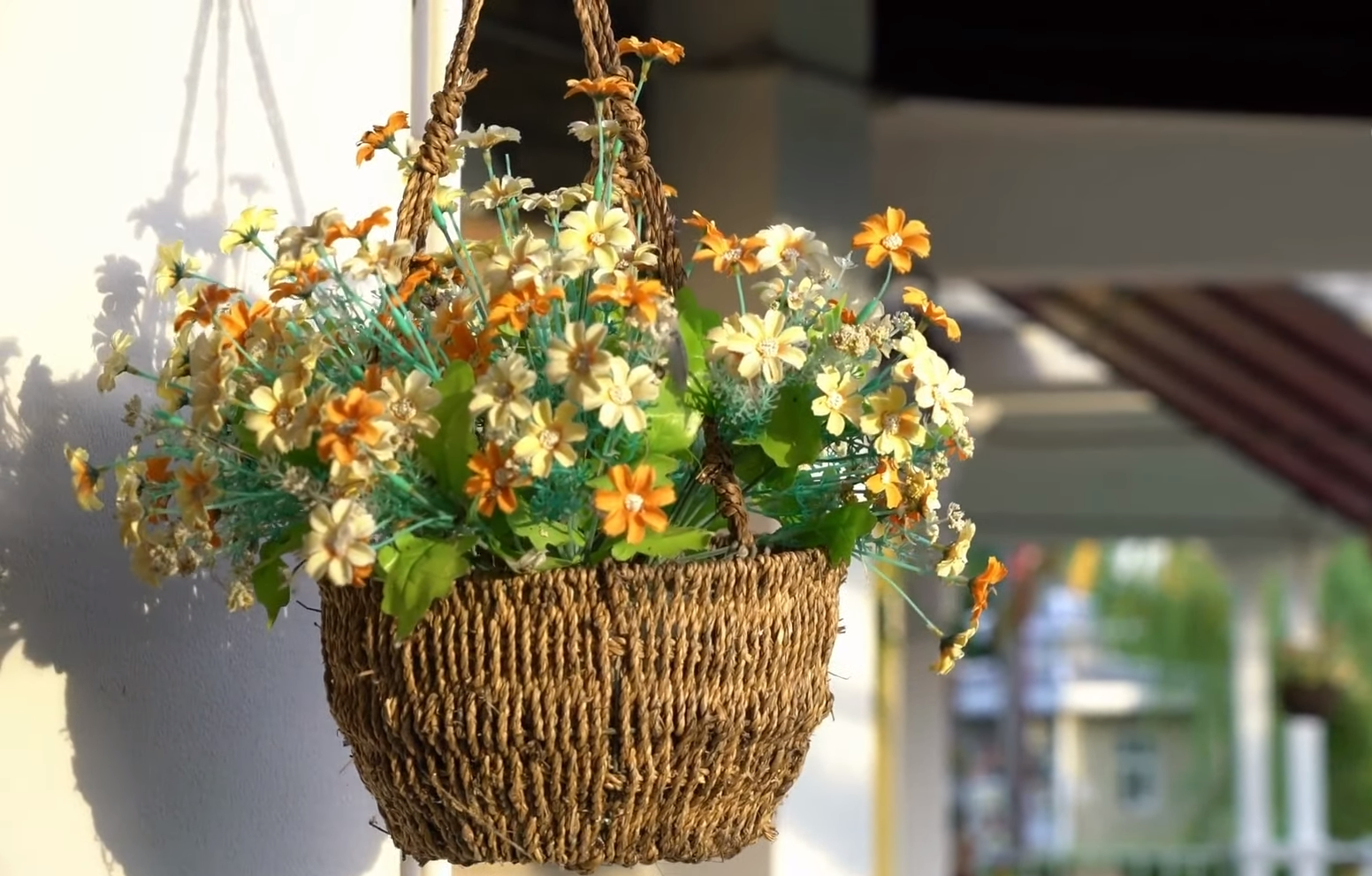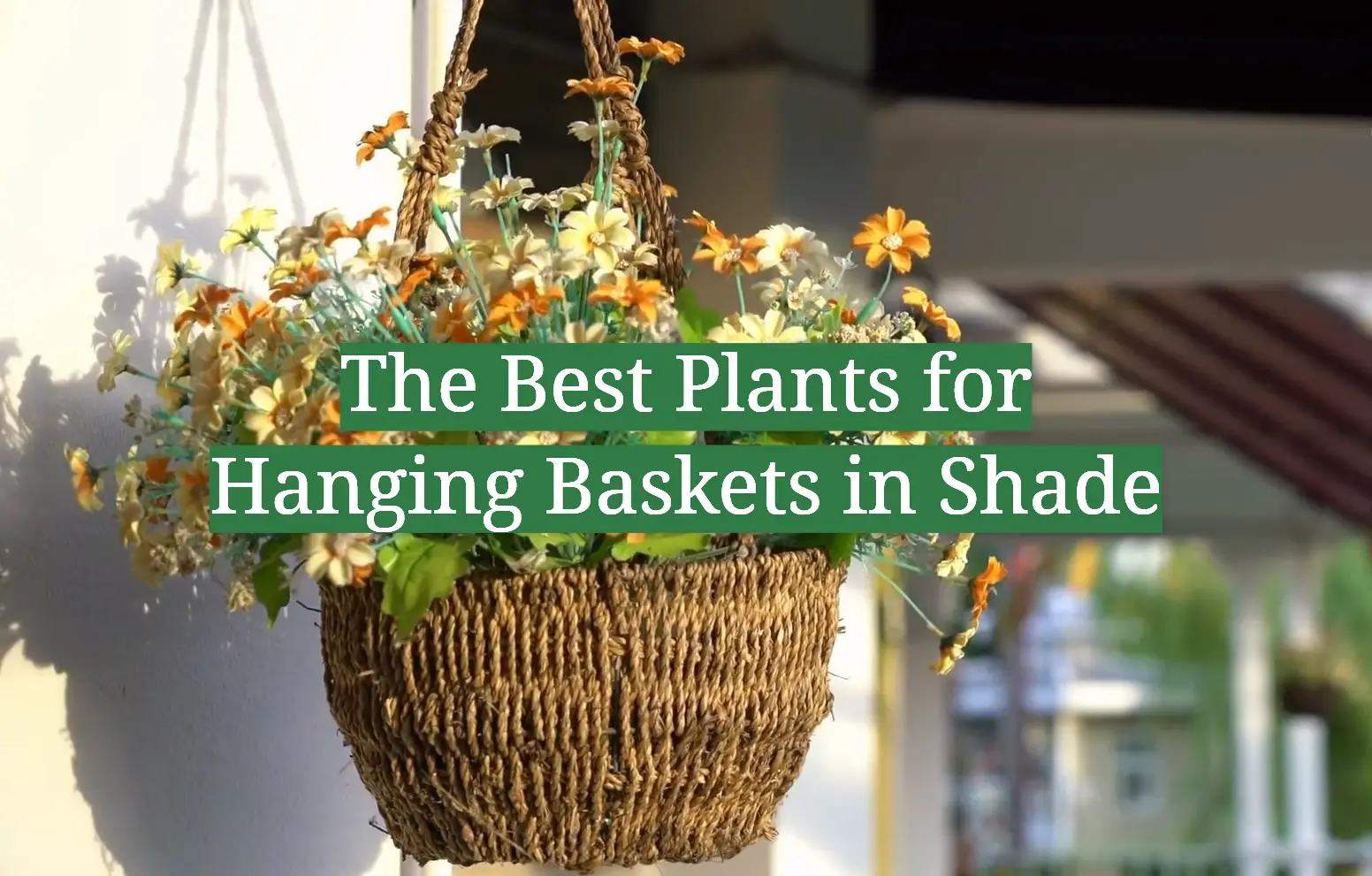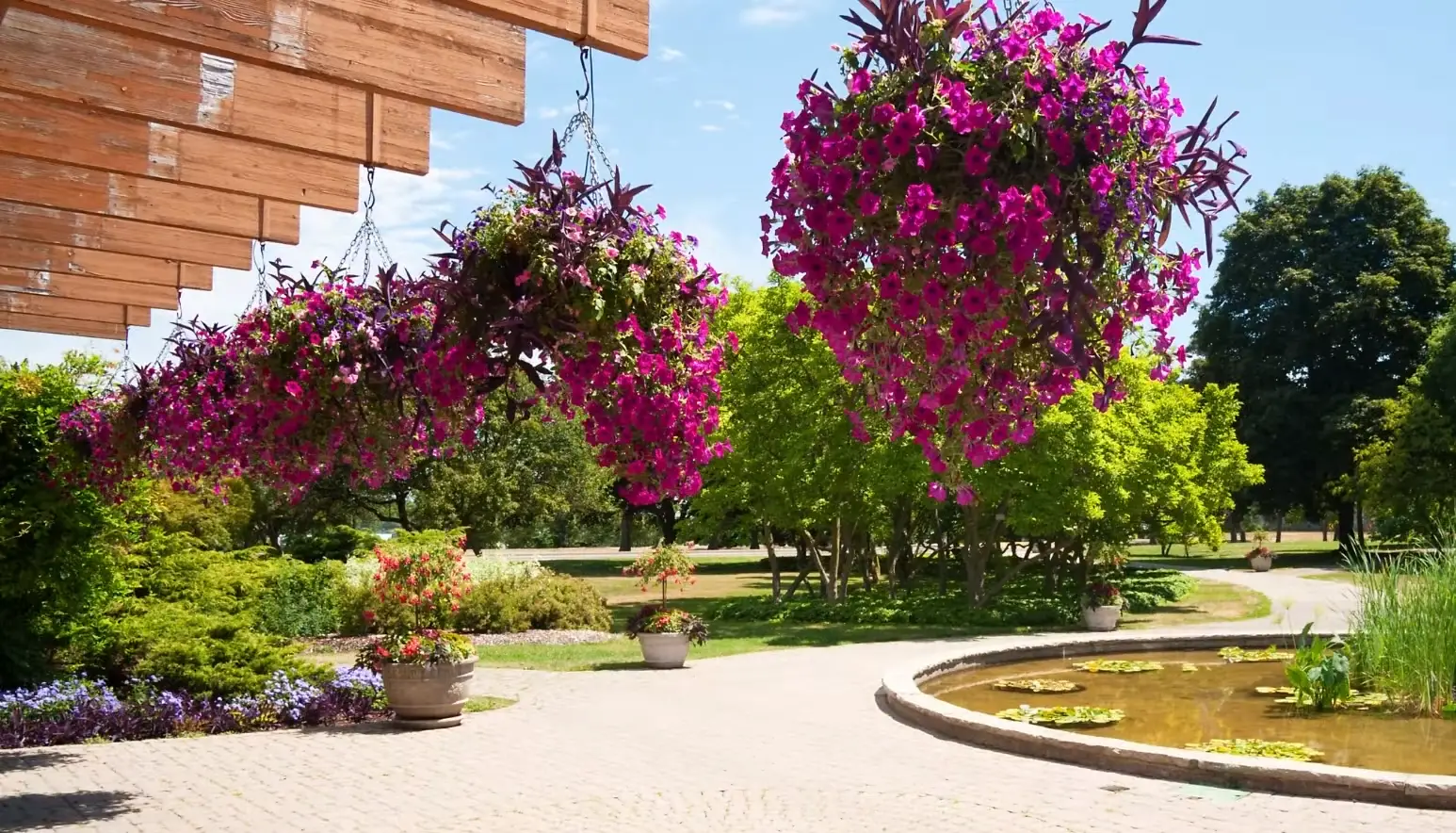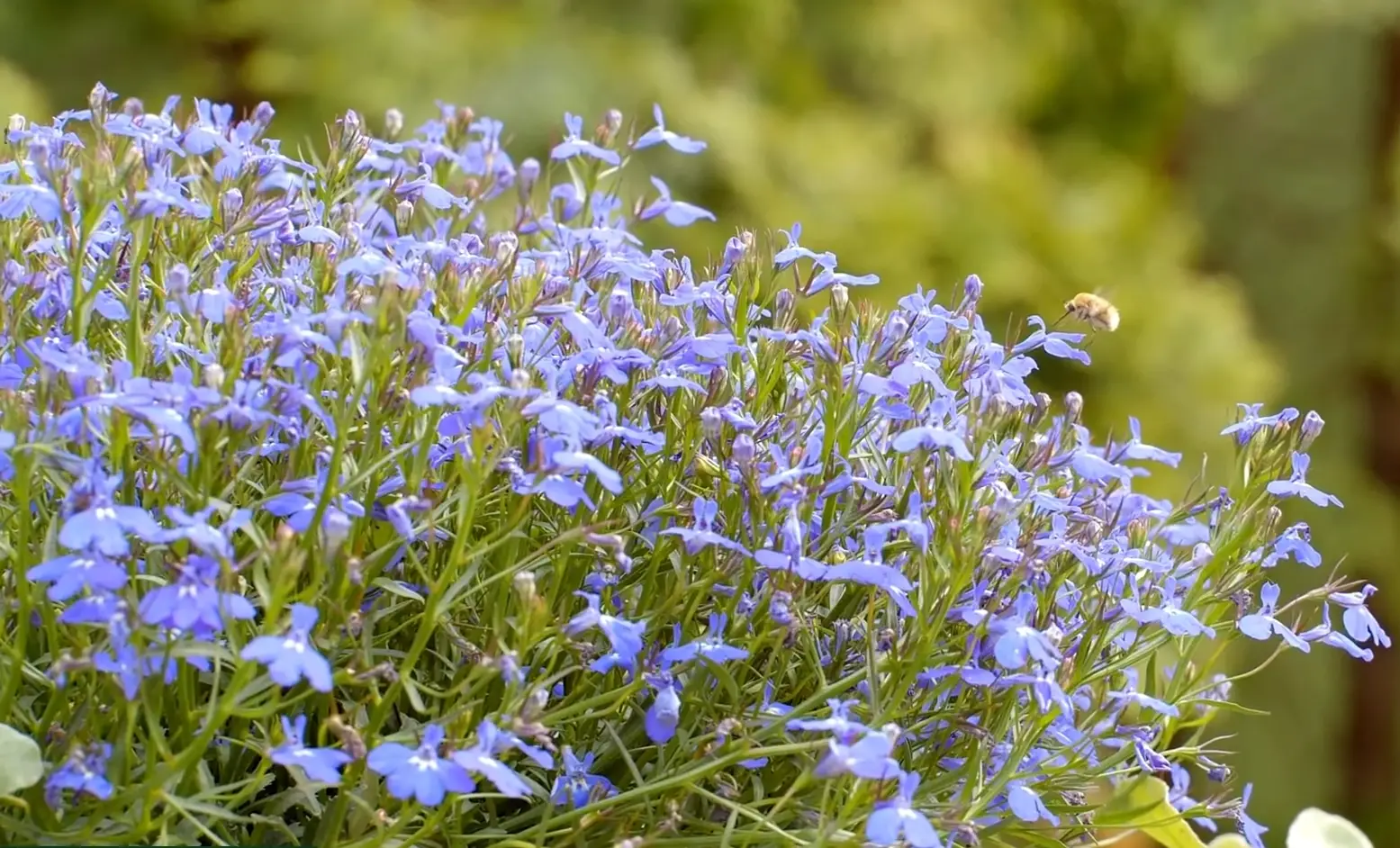For all the gardeners looking for a striking and low-maintenance way to freshen up their outdoor spaces, look no further than hanging baskets. Not only do they add height and interest to your environment while saving you valuable space, but these versatile planters also come with an array of colors, textures, and bloom times that will enhance any shady spot. Given the multitude of fantastic shade-tolerant plant choices, it can be quite daunting to select the ideal plants for suspending in baskets. That’s why we’ve compiled a list of our favorite flowers and foliage – from vibrant blooms to eye-catching greenery – that are guaranteed to make your shady areas pop!
Benefits of Hanging Baskets in Shade
Hanging baskets come with a plethora of benefits, especially when placed in shaded areas. First and foremost, they are great space-savers. They allow gardeners with limited ground space to still indulge in their love for plants. By hanging baskets from porches, balconies, or even tree branches, you can transform any small or unused space into a lush, green sanctuary.
Second, they add significant visual interest and aesthetics to your outdoor areas. The basket’s elevation can draw the eye upward, adding a new layer of depth and dimension to your garden or patio. Moreover, the volume and cascading effect of plants in hanging baskets can create a dramatic visual spectacle.
Third, hanging baskets provide an opportunity to enhance biodiversity in your garden. They attract a variety of insects and birds, promoting a healthy and balanced ecosystem. Certain plants are especially attractive to butterflies and bees, aiding in their much-needed conservation.
Lastly, hanging baskets have a practical advantage too. The elevated position makes it harder for pests to reach the plants, thereby reducing the chance of plant diseases. Additionally, it’s easier to control the growing environment including moisture, light, and feeding, as you have direct access to the plant’s roots and foliage. This results in healthier and more vibrant plants, making your garden a true oasis of nature.
Top Plants for Hanging Baskets in Shade
Selecting appropriate plants for shaded hanging baskets can have a substantial impact on the visual appeal and ambiance of your garden. Here, we will introduce a selection of top plants that thrive in shade and are perfect for hanging baskets. These plants not only have lush foliage and captivating blooms but are also resistant to most common pests and diseases. They’ll ensure your baskets remain vibrant and charming, serving as a living piece of art in your garden.
Fuchsia
Fuchsia is a fantastic choice for a shaded hanging basket, known for its stunning, pendulous flowers that are a delight to the eyes. Its blooms, which come in vibrant hues of pink, purple, and white, resemble delicate lanterns or twirling ballerinas, adding a touch of whimsy to any garden. The plant’s trailing habit is particularly beneficial in a hanging basket, allowing the striking blooms to cascade down beautifully.
Fuchsias prefer a cool, shaded location, making them perfect for areas of the garden that don’t receive much sunlight. To flourish, these plants necessitate soil that drains well and consistent watering. Overwatering or underwatering may result in leaf wilting or yellowing, making it vital to maintain a proper equilibrium. Fuchsias also appreciate a regular feeding regime during the blooming period to support their prolific flowering.
Another advantage of Fuchsias is their long blooming cycle. Depending on the variety, they can bloom from mid-spring till the first frosts of autumn, providing a constant display of color. They are also resistant to most common pests and diseases, making them a low-maintenance and rewarding choice for your shaded hanging baskets.

Begonia
Begonias are another excellent choice for a hanging basket, particularly known for their vibrant, diverse foliage and flowers. The colors range from pastel shades of pink and white to deep, fiery reds and oranges. The leaves of Begonias can be equally striking, with varieties showcasing green, bronze, or even multicolored leaves.
Begonias thrive in partial shade and require well-draining soil, similar to the Fuchsia. Excessive watering may result in root rot, thus it is crucial to allow the upper soil layer to dry out before watering once more, to prevent this condition. They also appreciate high humidity, so consider placing your hanging basket in a spot that benefits from morning dew or occasional misting.
A distinct advantage of Begonias is their versatility. With over 1,800 species, you’re guaranteed to find a Begonia that matches your preferences and environmental conditions. [1] Some varieties, like the tuberous Begonia, are admired for their large, showy flowers, while others, such as the rex Begonia, are grown for their decorative foliage.
Begonias also have a long blooming period, typically from mid-spring to late autumn. During this time, they provide a continuous display of color, adding to the aesthetic appeal of your garden. They’re generally resistant to pests, but watch out for snails and caterpillars which can occasionally pose a problem.
Impatiens
Impatiens, commonly known as Busy Lizzies, are another excellent choice for shaded hanging baskets. These charming plants are beloved for their vibrant, jewel-tone flowers and their ability to bloom profusely even in shady conditions. Impatiens flowers can range in color from vivid pinks and purples to soft pastels and classic whites, providing a continuous burst of color from late spring right up until the first frosts of autumn.
Impatiens are known for their low-maintenance requirements when it comes to care. They thrive in nutrient-rich, well-draining soil and appreciate regular watering, although they can withstand periods of drought. It’s important to prevent overwatering, as this can result in root rot. Fertilizer can be applied monthly during the growing season to promote vigorous growth and abundant flowering.
Impatiens are largely disease and pest-free, but they can sometimes fall prey to downy mildew. To prevent this, ensure good air circulation around your plants and avoid watering the foliage.

Coleus
Coleus, officially known as ‘Plectranthus scutellarioides’, is a mesmerizing and versatile plant perfect for hanging baskets. [2] With its multicolored, richly patterned, and intricate leaves, Coleus brings an explosion of color and texture to any setting. The foliage can present in an assorted spectrum of colors, including shades of green, yellow, pink, red, maroon, and even purple, often with beautifully contrasting edges or veining. The mosaic of colors on the leaves is a visual delight that can rival the appeal of any flowering plant.
In terms of care, Coleus enjoys a well-drained, organically rich soil and regular watering, similar to Impatiens. However, it is critical not to overwater, as this can lead to root damage. The plant thrives in areas with limited sunlight, although specific species have the ability to withstand greater exposure to sunlight.It’s recommended to pinch off the flowering spikes as they appear to direct more energy into the gorgeous foliage. Coleus can be susceptible to mealybugs and aphids, so routine inspection and treatment are necessary for the plant’s health.
Gardeners particularly favor coleus because of its ability to thrive in different environments and its simple propagation through stem cuttings. This makes it possible to multiply your collection without additional expense. In terms of size and form, there exist tiny dwarf species suitable for small hanging baskets, as well as larger, bushier varieties that can fill out more spacious containers.
Lobelia
Lobelia is a captivating choice for hanging baskets, presenting an abundance of delicate, trumpet-shaped flowers that create a waterfall of color. These blooms, ranging in shades of blue, violet, pink, and white, add a mesmerizing charm to your hanging garden. Lobelia, sometimes referred to as “edging lobelia” or “trailing lobelia,” is an excellent selection for cascading over the edges of baskets, with its trailing habit and profuse blooming.
Watering should be regular, keeping the soil consistently moist but not waterlogged. In hotter climates, daily watering may be required. To encourage more blooms, regular deadheading of spent flowers can be useful.

Browallia
Browallia, also known as the ‘Bush Violet’ or ‘Amethyst Flower’, is an underappreciated gem that can adorn your hanging baskets with a profusion of starry, blue-violet flowers. [3] Their delicate, bright blooms contrast beautifully against the rich green foliage, creating an eye-catching display from late spring until the first frost of fall.
Best suited for partial shade, Browallia is an excellent choice for those areas of your garden that don’t receive full sun. This particular plant flourishes in soil that is well-drained and abundant in organic matter. It appreciates a steady supply of moisture. It is crucial to avoid excessive drying of the soil, as it may result in root rot..
One of the key advantages of Browallia is its resistance to most common plant pests and diseases, making it a relatively low-maintenance choice. Regular deadheading can encourage the plant to produce more blooms, enhancing the overall appearance of your hanging basket.
Ferns
Ferns are an excellent choice for hanging baskets, offering a lush, green, and textured aesthetic that can transform any outdoor space into a tropical oasis. Their unique fronds create a beautiful, cascading effect, perfect for enhancing the visual interest of your hanging garden.
These ancient plants thrive in humid, shaded environments, making them ideal for areas of your garden that do not receive direct sunlight. They prefer a rich, well-drained soil, mimicking their natural habitat on forest floors. Watering should be done regularly, and it’s crucial to ensure the soil remains consistently moist but never waterlogged. If the top layer of soil feels dry to the touch, it’s time to water your ferns.
Ferns are generally easy to care for, requiring little more than regular watering and feeding. A monthly application of a balanced, water-soluble fertilizer during the growing season can help maintain their vibrant green color and encourage robust growth.
Toad Lillies
Toad Lilies, or Tricyrtis, are an enchanting choice for hanging baskets, especially if you’re aiming for a touch of woodland magic in your outdoor space. Native to Asia, these perennials are prized for their distinctive, orchid-like flowers that bloom in late summer and autumn, just when many other plants start to wind down.
Toad Lilies are relatively easy to care for. Regular watering and occasional feeding with a balanced fertilizer during the growing season should be enough to maintain their beauty.Pruning is generally not required, except for removing dead or yellowing leaves to keep the plant tidy.
A word of caution though, Toad Lilies are a slow-growing plant, so don’t expect your hanging basket to fill out quickly. Yet, it’s worth the wait. Once established, they offer a dramatic display of speckled, star-shaped blooms set against dark green leaves, providing a striking spectacle for any garden.
Bleeding Hearts
Bleeding Hearts, scientifically known as Dicentra spectabilis, are another excellent choice for hanging baskets. These plants are famed for their distinct heart-shaped pink and white flowers, which dangle delicately from arching stems, creating a visual spectacle that’s hard to ignore.
Thriving in areas with partial to full shade, Bleeding Hearts have a preference for well-drained soil that is abundant in organic matter. These plants appreciate consistent moisture, especially during their active growth period in spring and early summer, so regular watering is crucial. Nonetheless, it is important to exercise caution and avoid excessive watering, as an excess of water can contribute to the development of root rot.
In terms of pests and diseases, Bleeding Hearts are relatively resilient. However, occasionally, slugs, snails, or aphids may become a problem. Consistent surveillance and the implementation of appropriate organic pest management techniques can aid in preventing these pests from intruding.
One of the most endearing aspects of Bleeding Hearts is their early spring bloom time. As one of the first plants to flower in the season, they offer a much-needed pop of color and a signal that warmer days are on their way. Once established, the plants will continue to bloom throughout the spring, leading to an enchanting display that’s sure to add charm to any garden.
Creeping Mint
Creeping Mint, scientific name Mentha requienii, is a ground-hugging perennial herb, notable for its dense growth habit and delightful aromatic nature. As its name suggests, the plant has a creeping growth, making it an ideal candidate for hanging baskets where it can trail along the sides, adding depth and interest.
Creeping Mint is a sun-loving plant and thrives in locations receiving at least six hours of direct sunlight each day. However, it can also tolerate partial shade. When it comes to soil, it prefers well-draining soil, and like most mint varieties, appreciates a good watering routine. Although it’s drought-tolerant to some extent, regular watering will help maintain its vibrant appearance.
In terms of maintenance, Creeping Mint is relatively easy to care for. Regular fertilization is unnecessary, and pruning is solely required for maintaining its shape or controlling its growth. Pests are typically not an issue, but it’s always a good idea to monitor your plants regularly and deal with any problems as soon as they arise.
Caring for Hanging Baskets in Shade
Caring for hanging baskets in the shade requires a combination of adequate watering, feeding, and pruning. Although these baskets are not directly exposed to the sun, they can still dry out, so it’s essential to maintain a consistent watering schedule.
Contrarily, pruning enhances the plant’s shape and promotes denser growth, resulting in a more aesthetically pleasing hanging basket that appears fuller. Remember to remove any dead or diseased leaves promptly, as these can affect the overall health of your plant.
Design Tips for Hanging Baskets in Shade
When designing your hanging baskets for shade, consider the color and texture of the plants. Opt for plants with vibrant colors and varied textures to create visual interest. For example, ferns provide a delicate, feathery texture that contrasts beautifully with the bold foliage of hostas.
Finally, remember that plant placement within the basket is crucial. Position the plants so that they can all be seen and appreciated, and remember to turn the basket occasionally so that all plants receive equal light exposure.
Frequently Asked Questions
Can hanging baskets grow in the shade?
Yes, hanging baskets can indeed grow in the shade. However, the success largely depends on the type of plants you choose for your basket. Some plants thrive in shade conditions, including ferns, hostas, and impatiens. These plants do not require direct sunlight and can grow well with indirect light or partial shade. Always remember to check the light requirements of your chosen plants when planning your hanging baskets for shaded areas.
Which plant grows best in full shade?
Several plants are well-suited to grow in full shade. Ferns, such as the “Maidenhair fern” or “Boston fern”, are hardy plants that thrive in low-light situations. Hostas, known for their stunning foliage, also do well in full shade and can add a pop of color with their variegated leaves. Additionally, the “Dead Nettle” is a fantastic ground cover plant for shaded areas, featuring silver-white foliage that brightens up darker spaces. Always ensure that the plants you choose are compatible with the specific conditions of your garden.
What hanging plants do not need sunlight?
Several hanging plants do well in low light or indirect sunlight conditions. These include Pothos (Devil’s Ivy), Spider Plant, and English Ivy. Pothos is a versatile plant with heart-shaped leaves that enjoys low to moderate light. Spider Plants are great for indoor hanging baskets and can thrive in indirect sunlight. English Ivy, though it can tolerate low light, prefers a few hours of sunlight each day. Remember to always check the light requirements of your chosen plants and adjust their location as needed.
Can you grow anything in the shade?
Yes, you can definitely grow a variety of plants in the shade. In fact, some plants prefer shaded conditions over direct sunlight. These include Begonias, Hydrangeas, and Heucheras. Begonias are versatile and can grow in a wide range of conditions, including full or partial shade. Hydrangeas are known for their large, vibrant blooms and they love shady spots. Heucheras, also known as Coral Bells, are admired for their beautiful foliage and they thrive in full shade conditions. However, it’s always important to research each plant’s specific needs and provide the right care for them to flourish in a shaded environment.
Useful Video: 5 Best Hanging Basket Plants & Flowers for Shade 🌺🌱 // Gardening Tips
Conclusion
In conclusion, cultivating a thriving garden in shaded areas is entirely feasible with the right selection of plants. Whether you’re looking for ground cover plants like the “Dead Nettle,” or hanging varieties such as Pothos and Spider Plant, or vibrant bloomers like Begonias and Hydrangeas, nature offers a diverse palette of flora that can flourish in low-light conditions. The key is to understand each plant’s unique needs and provide the optimal environment for it to thrive. With a little research and care, even the shadiest corners of your garden can transform into a lush, green sanctuary.
References:
- https://facts.net/nature/plants/9-intriguing-facts-about-begonia/
- https://www.missouribotanicalgarden.org/PlantFinder/PlantFinderDetails.aspx?kempercode=a547
- https://plants.ces.ncsu.edu/plants/browallia-speciosa/













Leave a Reply
View Comments